 Tricycle: Is there a Buddhist point of view on psychedelics?
Tricycle: Is there a Buddhist point of view on psychedelics?
Kornfield: No. Psychedelics are found rarely, if at all, in the Buddhist tradition, and generally would be lumped together in the precepts under “intoxicants.” In Zen, Vajrayana, and the Theravada traditions, there is very little mention of them and there is no traditional point of view about their use. It is important to understand that. What points of view we have come from the understanding of Buddhist masters and teachers based on contemporary experience.
The precept in Theravada Buddhism for dealing with intoxicants is one of the five basic training precepts for living a wise life: not to kill, not to steal, not to speak falsely, not to engage in sexual conduct that causes suffering, and lastly, to refrain from using intoxicants to the point of heedlessness or loss of awareness. An alternate translation says not to use any substances that distort the sense of attention. Then it is left up to the individual, as are all the precepts, to use these guidelines to become more genuinely conscious.
Tricycle: Are the precepts understood similarly in the East and the West?
Kornfield: They are much more fundamental to practice in Asia. There you traditionally begin with shila, or compassionate action. This commitment to not cause harm is the foundation upon which all spiritual life is built. It is universally understood that you can’t meditate properly after a day of lying and stealing! To free the heart from entanglement in greed, fear, hatred and delusion, a nonviolent relationship with the world must be developed. Out of this ground of compassionate conduct grows the whole range of other meditative and spiritual practices.
Tricycle: How would that function?
Kornfield: By living a compassionate and harmonious life, you have already begun to quiet the mind and open the heart. Then the second domain is to train yourself through meditations, visualizations, and yogic practices that tame the wild monkey-mind. It is the power of these practices that dissolve the barriers of the mind, the identification with our small sense of self. They unify our body, heart, and mind through concentration, and open us up to the vast inner realms.
The third domain is the arising of wisdom, or prajna. Based on a foundation of compassionate living and meditative training, consciousness becomes clear and open. Wisdom arises as we see the whole nature of how consciousness creates the world and discover freedom and the great heart of a Buddha in the midst of it all. With this foundation of wise conduct and inner training, you have a context for the deepest wisdom and it’s naturally integrated in your life. What has happened in the West seems to be a reversal of that.
Tricycle: A reversal? What do you mean?
Kornfield: Many people who took LSD, mushrooms, and other psychedelics, often along with readings fromThe Tibetan Book of the Dead or some Zen texts, had the gates of wisdom opened to a certain extent. They began to see that their limited consciousness was only one plane and that there were a thousand new things to discover about the mind. They saw many new realms, got new perspectives on birth and death, and discovered the nature of mind and consciousness as a field of creation rather than the mechanical result of having a body. Some opened beyond the illusion of separation to the truth of the oneness of things.
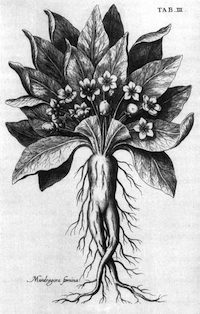 But in order to maintain this vision they had to keep taking the psychedelics over and over. Even though there were some transformations from these experiences, they tended to fade for a lot of people. Following that some people said, “If we can’t maintain the highs of consciousness that come through the psychedelics, let’s see if there is some other way.” And so they undertook various kinds of spiritual disciplines. They did kundalini yoga and bastrika breathing, or they did serious hatha yoga as a sadhana, raja yoga, mantra and concentration exercises, visualizations, or Buddhist practices as a way to get back to those profound and compelling states that had come through psychedelics.
But in order to maintain this vision they had to keep taking the psychedelics over and over. Even though there were some transformations from these experiences, they tended to fade for a lot of people. Following that some people said, “If we can’t maintain the highs of consciousness that come through the psychedelics, let’s see if there is some other way.” And so they undertook various kinds of spiritual disciplines. They did kundalini yoga and bastrika breathing, or they did serious hatha yoga as a sadhana, raja yoga, mantra and concentration exercises, visualizations, or Buddhist practices as a way to get back to those profound and compelling states that had come through psychedelics.
Tricycle: Are you saying that it instilled in people a thirst for experience?
Kornfield: A thirst, that is correct.
Tricycle: Would you say this was the same thirst considered to be the cause of suffering in terms of the Buddha’s second noble truth, i.e., that we suffer because of our desire or thirst for sensual or mental experience?
Kornfield: Psychedelics awakened in people not just a thirst, but a sense of the possibilities for exploring the mind and body—that they could live in a different way. Then they began to develop those sensitivities and those visions without repeatedly taking psychedelics by undertaking some spiritual discipline, yoga, or meditation. Finally, many people began to see that even their meditative practices wouldn’t stabilize when the rest of their life wasn’t included. They found it was necessary to take care with their actions in a way that was non-harming and compassionate. So we discovered that fundamental change must be grounded in our ethical behavior, and in compassion followed by a systematic inner training. Those are the supports for long-lasting and integrated access to these transformative experiences.
Tricycle: How important was LSD for the importation of Eastern spiritual practices into the U.S. during the sixties?
Kornfield: They were certainly powerful for me. I took LSD and other psychedelics at Dartmouth after I started studying Eastern religion. They came hand in hand, as they did for many people. In fact, the majority of Western Buddhist teachers used psychedelics at the start of their spiritual practice. A number still do on occasion. But of the many hundreds of people I know who took psychedelics, only a few had radically transformative experiences. Many others were greatly inspired, and a few were damaged. It’s like winning the lottery. A lot of people play, and while not so many people win big, the potential is there.
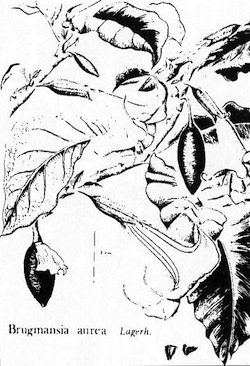 Tricycle: There is a story that when the Dalai Lama was asked if you could use drugs to attain enlightenment, he said, “I sure hope so.” And when Zen Master Seung Sahn was asked what he thought about using drugs to help in the quest for self-knowledge he said: “Yes, there are special medicines which, if taken with the proper attitude, can facilitate self-realization.” Then he added: “But if you have the proper attitude, you can take anything—take a walk, or a bath.”
Tricycle: There is a story that when the Dalai Lama was asked if you could use drugs to attain enlightenment, he said, “I sure hope so.” And when Zen Master Seung Sahn was asked what he thought about using drugs to help in the quest for self-knowledge he said: “Yes, there are special medicines which, if taken with the proper attitude, can facilitate self-realization.” Then he added: “But if you have the proper attitude, you can take anything—take a walk, or a bath.”
Kornfield: I have the utmost respect for the power of psychedelics. In taking a tempered view of them, it does not mean that I do not have a lot of respect for them, and for the work that certain courageous researchers have done with them.
My sense from my own Buddhist training and from teaching traditional practice for many years is that people underestimate the depth of change that is required to transform oneself in spiritual life. True liberation requires a great perspective—called “a long enduring mind” by one Zen master. Yes, awakening comes in a moment, but living it, stabilizing it, can take months, years, and lifetimes. The propensities or conditioned habits that we have are so deeply ingrained that even enormously compelling visions do not change them very much. Therefore, the practices of liberation taught by the Buddha draw on many dimensions of life to help empower such a deep transformation. The possibility of liberation of the heart from greed, hatred, delusion, and liberation from all sense of separateness and fear is a very compelling possibility for humans.
 When you have undertaken a deep spiritual practice of whatever kind, including psychedelic experiences, you begin to encounter the roots of Greed with a capital “G”: the most primal kinds of grasping; and Hatred: finding Hitler and Attila the Hun in your mind; and Delusion, which manifests as the darkest blindness of confusion. You must learn to work with these forces and transform them in a way that leads to genuine liberation.
When you have undertaken a deep spiritual practice of whatever kind, including psychedelic experiences, you begin to encounter the roots of Greed with a capital “G”: the most primal kinds of grasping; and Hatred: finding Hitler and Attila the Hun in your mind; and Delusion, which manifests as the darkest blindness of confusion. You must learn to work with these forces and transform them in a way that leads to genuine liberation.
A lot of people use psychedelics in mindless or misguided ways, without much understanding. The spiritual context gets lost. It’s like taking a synthetic mescaline pill and forgetting the 200-mile desert walk and the months of prayer and purification the Huichols use to prepare for their peyote ceremony. Modern explorers like Stan Grof and Ram Dass have articulated a sense of the power of the forces that one may confront. One needs to respect the depth of these experiences and make a conscious commitment to the full journey of spiritual change.
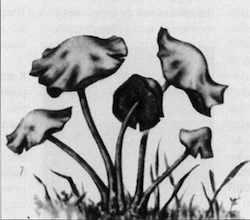 Tricycle: What about addiction?
Tricycle: What about addiction?
Kornfield: Even among the most conscious explorers of contemporary psychedelics, addiction and attachment has sometimes been a problem. Even more critical is the overly positive message about both the spiritual and the casual use of these drugs that has been adopted by quite a few people who could not handle them well at all. As many of us who have used psychedelics have discovered, it is not an easy practice. The most liberal point of view of the precepts would make their use nonhabitual (which probably means occasional) and sacred. If one uses any substance, whether it is wine, marijuana, LSD, or mushrooms, this precept says to make that a conscious and careful part of your life. Without the precepts, if one even begins the journey, they will get lost or go off the track. You can not complete the journey until you get the basics right. This is really a very simple message.
Almost every system in the world that is assisted by substances, including the wide range of shamanism, exists in a context of purification.
Tricycle: What are the purifications that might be applicable to a psychedelic experience today?
Kornfield: First, there is the purification of non-harming, or shila. Following that, there are purifications of the body through yoga, breathwork, fasting, and other practices that allow your body to feel and to be open enough to touch these deeper levels and to integrate them. You can take a very powerful substance and even if you are physically a wreck, you can touch deep places, but there will be a physical price to pay for it. When your body is in tune and open, you can open to deeper levels with much less physical disharmony. It also allows the experience to be integrated. Without preparing the body, one cannot hold those understandings.
Then there are the purifications of the heart and mind; that is, emotions and thoughts. For many, purification of the heart involves extending forgiveness and opening the heart—seeing the fears, angers, and memories that have been locked in and releasing them. Purification of thought means taking the crazed monkey-mind and nonstop inner dialogue and beginning to train a stability of mind. Most people find this happens with a long regular practice, using sitting meditation, mantra, visualization, or a hundred other ways. Once the mind is stabilized you can apply that clarity to discover the laws of the mind, or the laws of consciousness.
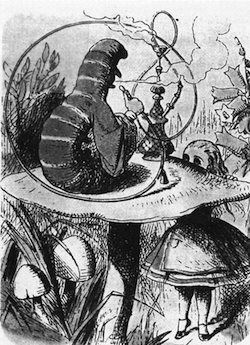 Tricycle: How does a psychedelic “trip” relate to a spiritual journey?
Tricycle: How does a psychedelic “trip” relate to a spiritual journey?
Kornfield: In a spiritual journey, the point is to awaken to our natural inner freedom, our true nature. To do this we must start where we are. In beginning to quiet the mind and open the heart you often encounter waves of desire, fear, anger, laziness, or restlessness. These are the preliminary hindrances to transformation. You learn how to use wise attention so that you don’t become caught up or lost in them. As your body and mind become more open and purified, you take that ability to be balanced and less caught by these energies, and use this ability to enter other domains of consciousness.
Then, if you should enter a domain of pure light filled with love and ecstasy, you will have learned how to do it without getting too attached. You see it as part of the passing show. And you can go to the hell realms that arise within you with the same attitude. You become free in the realms of birth and death. You learn how to open to them without so much grasping and attachment. Here you learn not just the content of the various realms of consciousness, where psychedelics can also take you, but how to relate to it all wisely. If I were to put any sentence in this interview in capitals it would be that spiritual awakening is not about just visiting the many realms of heart, mind, and body, but learning how to open to them wisely, compassionately, and with real freedom.
Tricycle: How can we understand the healing effect of psychedelic experience from the perspective of Buddhist psychology and meditation?
Kornfield: Healing takes place in a number of ways, but the most fundamental healing in Buddhist practice comes by bringing awareness to that which was twisted, knotted, or held in darkness in the body, feelings, or mind. Through systematic meditation practice one brings the power of compassion and mindfulness to these knots and the deepest patterns of holding open up. There are many patterns of mind in which we get entangled: beliefs, opinions, and views, all that leads us to hold on to our sense of self as separate. These too can be opened and healed.
Healing with psychedelics is much the same. Healing comes when you have a suitable and careful situation, and one’s unconscious is opened by the psychedelics. Maybe you will relive a past trauma, or experience the pain that is held in your physical body from an accident, or an operation, or the tension from deeply stored anger or grasping comes into consciousness and begins to release. The healing effects come through the power of bringing into consciousness that which has been below the threshold of awareness. Part of the difficulty with psychedelics, and even with meditation at some points, is that it comes too quickly and people get overwhelmed. There is a danger that they will shut down immediately afterward. They will touch a place that is too fearful or too difficult. But there are healings that take place in that way on all those levels of body, feelings, and mind.
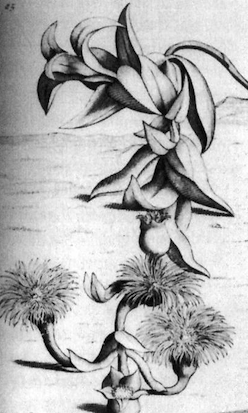 Tricycle: A crucial aspect of both ancient wisdom and the new paradigm is that separateness is an illusion, a superficial level of reality, and that at a fundamental level, all things are connected. This is hard to understand on the sensory or intellectual level, where experience suggests that things are separate. If psychedelics can take you to that place of essential unity, are they not a valuable tool in the development of a new paradigm that emphasizes wholeness?
Tricycle: A crucial aspect of both ancient wisdom and the new paradigm is that separateness is an illusion, a superficial level of reality, and that at a fundamental level, all things are connected. This is hard to understand on the sensory or intellectual level, where experience suggests that things are separate. If psychedelics can take you to that place of essential unity, are they not a valuable tool in the development of a new paradigm that emphasizes wholeness?
Kornfield: Any tool or practice that can open the heart and show that we are not separate, that touches the realms of universal loving-kindness and universal compassion, can be valuable. For some people psychedelics can open the mind and reveal that consciousness creates the world, that physical reality is created out of consciousness and not the opposite. They can show that reality can be filled with light and humor. They can show that there are realms of tremendous transcendent understanding and realms of many different scales of time, eternally slow or eternally rapid. They can also open us to hell realms where there is extraordinary pain and seemingly no way out.
Tricycle: It seems that something very powerful is required to show that this level of reality is not the only one, especially today in the West, where we have developed such mastery over the material world.
Kornfield: I see psychedelics as having been enormously useful as an initial opening for people, and at certain stages it may be possible to use them again wisely, but with the constraints of shila. But they can be easily abused if one is not careful about the set and setting. To explore some of this territory, Stan and Christina Grof and I offer annual retreats that integrate Holotropic Breathwork (somewhat like psychedelic experience) and Buddhist meditation. Participants seem to really respond to this combination of practices.
Tricycle: One of the best applications of the psychedelics in modern times may be in the work with people who are dying a little faster than the rest of us. Research with terminal patients indicates that the psychedelic experience illuminates the process of dying and lessens one’s fear of it.
Kornfield: From what I know of this work it holds great potential, primarily for people who have not done a disciplined spiritual practice. In many ways spiritual practice is intended to prepare us to die. By going through a meditative death-rebirth process deliberately, we can dissolve the illusion of a separate self, access other realms of consciousness beyond our limited view, and learn to live more wisely because of that. If we have never learned that, perhaps psychedelics could assist us in preparing for death as it opened so many doors in the initial stages of spiritual practice. Whatever leads to opening the heart and mind and letting go is beneficial.
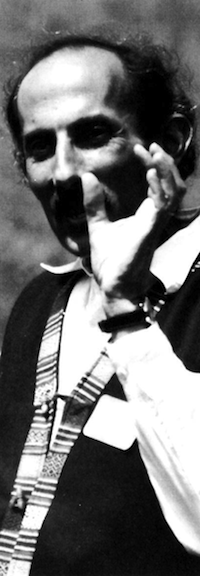 Tricycle: At a meeting held at the Harvard Divinity School in 1985, psychologist Dan Brown brought up the distinction between ecstasy and enstasis in a discussion about psychedelics. Ecstasy would be the flight of the soul from the body, “the soul’s ecstatic journey through the various cosmic regions,” whereas Yoga pursues enstasis, or the final concentration of the spirit and “escape from the cosmos” [Eliade, 1958,1964]. What do you think about this distinction with regard to psychedelic experience and meditation?
Tricycle: At a meeting held at the Harvard Divinity School in 1985, psychologist Dan Brown brought up the distinction between ecstasy and enstasis in a discussion about psychedelics. Ecstasy would be the flight of the soul from the body, “the soul’s ecstatic journey through the various cosmic regions,” whereas Yoga pursues enstasis, or the final concentration of the spirit and “escape from the cosmos” [Eliade, 1958,1964]. What do you think about this distinction with regard to psychedelic experience and meditation?
Kornfield: Buddhist meditation goes from enstasis to ecstasy. Some purely ecstatic practices in Buddhist meditation exist, but primarily we work not so much by turning up the volume as by tuning the receiver. By training sacred attention we can awaken to the deepest levels of body and mind, and beyond that to the non-dual nature of reality. All the realms of consciousness become available through a powerfully tuned awareness. You can enter realms where the body fills with light, you experience tremendous rapture, and ecstasy, and are catapulted through all the realms of the heavens and hells.
Tricycle: Do you think Buddhism and psychedelics will continue to intersect in the future?
Kornfield: I see psychedelics as one of the most promising areas of modern consciousness research. I would not be surprised if at some point there comes to be a useful marriage between some of these sacred materials and a systematic training or practice that I have described. That marriage will have to be based on an understanding and respect for the ancient laws of karma, grounded in compassion, virtue, an open heart and a trained mind, and the laws of liberation. Given those, there might be some very fruitful combination.
Thank you for subscribing to Tricycle! As a nonprofit, we depend on readers like you to keep Buddhist teachings and practices widely available.